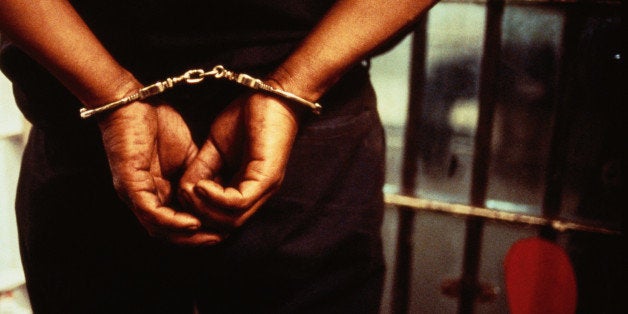
Over the last couple of weeks, I have been thinking about Ta-Nehisi Coates' brilliant and haunting essay in The Atlantic Monthly, "The Case for Reparations," and what it means for jail and prison reform.
Weaving together history, biography, and social science, Coates contends that the unacknowledged legacy of slavery and white supremacy still exerts a harmful influence on American society, particularly in the devastating concentration of poverty and disadvantage in our country's poorest black communities.
As Coates argues, Chicago's North Lawndale exemplifies this insidious dynamic. As a result of governmentally sanctioned plunder of the wealth of black families who had fled to Chicago to escape the Jim Crow South, coupled with decades of racist urban planning, North Lawndale is on the "on wrong end of virtually every socioeconomic indicator." As Coates writes:
The neighborhood is 92 percent black. Its homicide rate is 45 per 100,000 -- triple the rate of the city as a whole. The infant-mortality rate is 14 per 1,000 -- more than twice the national average. Forty-three percent of the people in North Lawndale live below the poverty line -- double Chicago's overall rate. Forty-five percent of all households are on food stamps -- nearly three times the rate of the city at large. ... Kids in North Lawndale need not be confused about their prospects: Cook County's Juvenile Temporary Detention Center sits directly adjacent to the neighborhood.
In the story of North Lawndale and what it represents, the Juvenile Temporary Detention Center (JTDC) stands for more than the bleak prospects of the neighborhood's young people. The facility is at once a product of the history that Coates chronicles and one of most perversely effective methods we use to avoid acknowledging it.
The JTDC holds about 300 kids, almost 90 percent of whom are black males from a small handful of Chicago's most impoverished and segregated neighborhoods, like North Lawndale. Because most of the population are detained for low-level, nonviolent offenses like statutory violations and property or drug offenses, the facility is more of a social-service overflow site for the city's poorest black communities than a place to detain youth who pose a legitimate risk to public safety.
This use of the JTDC doesn't simply point back to our failure to correct the crippling consequences of past racist policies. A growing body of research shows that when compared with community-based sanctions, incarceration criminalizes at-risk youth, making them less likely to graduate from high school and more likely to re-offend as adults. Because it costs about $350 a day to incarcerate a kid in the JTDC, the facility robs Cook County of the resources it could use to meaningfully address the needs of justice-involved kids and their communities.
What about the 25 to 30 percent of the JTDC's population who are charged with the most violent crimes and who may pose a risk to public safety? Their situation is worse and all the more telling.
When juveniles are charged with serious crimes, Illinois law requires them to be automatically transferred to adult court. From the moment prosecutors set the charge, usually a few hours to a few days after arrest, these kids are thrown into a process devoid of any substantive examination of their lives or the circumstances that brought them to the justice system, a process that typically ends with a perfunctory guilty plea and a lengthy prison sentence.
This is in no way meant to minimize the seriousness of violent juvenile crime or the culpability of young offenders. When kids break the law, we should hold them accountable in ways that are developmentally appropriate. At the same time, our methods of punishing serious juvenile offenders should enable us to reckon with the root causes of their offending, which is precisely what laws like automatic transfer foreclose.
Like most states, Illinois lacks an official entity that tracks even the most basic statistics about young people tried as adults. Our only reliable source of information about automatic transfer comes from nonprofits like the Juvenile Justice Initiative (JJI), one of Illinois' leading advocacy organizations. In a recent study on Cook County's use of automatic transfer from 2010 to 2012, JJI found that the law had a profoundly disproportionate impact on black youth: Out of 257 total cases, only one white child had been tried as an adult.
The willful ignorance and lack of wisdom that structure our use of institutions like Cook County's JTDC and the damage they inflict upon communities like North Lawndale are symptoms of a deeper and more pervasive affliction. Even as a growing number of people question our overall use of incarceration to respond to crime, we struggle to find ways to address social and economic dysfunction that are fairer and more creative and effective than prison because, long ago, we imprisoned our thinking.
This is what James Baldwin called our "fearful inheritance." It is a history that few living today had a direct hand in creating, but it still lives through us in the laws, policies, and institutions that it formed.
This is the task that Coates asks us to engage: To wrestle with the meaning of this history and our relationship to it. That's why the case for reparations has everything to do with prison and jail reform. To repair the harm caused by the legacy of American racism and white supremacy, we must look beyond the cages we have built to hide the consequences of our history from ourselves.
This op-ed first appeared in the Juvenile Justice Information Exchange.